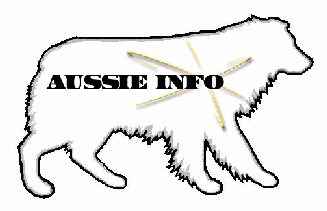
When finished reading any article on this site, please use your "back" button on your browser to return to the main topic pages.
How will a working description impact the agility program?
By Allison Bryant, originally posted to ASCA-L March 2004
I have had several people contact
me with concerns about how a working description might impact the agility
program. They are worried that some sort of 'style' component will be
incorporated into the agility rules, if a working description is developed for
the stock program.
The agility program and the stock program are very different. The stock
program's goal is "To preserve the natural inherited working ability of the
Australian Shepherd." (From Chapter 1, Section 1 of the ASCA Stock Dog Rules.)
The agility program's purpose is "to demonstrate the ability of the dog
and its handler to work as a smooth functioning team." (Chapter 1, Section 1.2
Purpose of Agility Trials.) The agility program's purpose has no mention of
'inherited working ability'. It just focuses on the success of the teamwork.
That success is measured by objective standards set forth by the rest of the
rule book. Knocked bars, off courses and course times are all used as objective
measures to determine if a dog was successful or not. In addition, each class
has its own goal.
For example: Section 4.2 - Regular Agility "The purpose of the
Regular Agility Class is to demonstrate the handler and dog's ability to perform
all of the Agility obstacles." That section then explains each goal of each
level. The only style component that is mentioned in the rules covers 'unsafe
manner' of execution of the obstacles.
The Stock Dog rulebook refers to 'manner in which a dog controls stock'. Chapter
4 Section 4 #4 states "The scoring for the "Dogs ability to control livestock"
sections of the run will be for the manner in which a dog controls his stock so
that they will go through an obstacle and the teamwork apparent between dog and
handler, the dogs training, its' instinct, power, savvy and the workability of
the livestock."
Chapter 5 of the Agility rule book explains how runs are scored. The judge sets a course time. Any dog who goes over the course time, will receive time faults. Handling faults and obstacle faults are also defined (knocked bars, missed weave poles, off courses). The faults are very objective in nature...either the dog performed the obstacle correctly or he didn't. The only fault that is subjective is the 'Unsafe Performance of an Obstacle' Fault.
Since the objective of the agility program is to test dog and handler's skills in performing the obstacles and there is no mention of inherited instinct, I don't see how a working description could have any effect on the Agility Program. As an ASCA Agility Committee member, a competitor for 8 years and someone who is very familiar with the rule book, I don't see a connection between the goals of the stock program and the agility program.
If there are people who are concerned about how a working description will impact the agility program, please let me know.
Thanks,
Allison Bryant